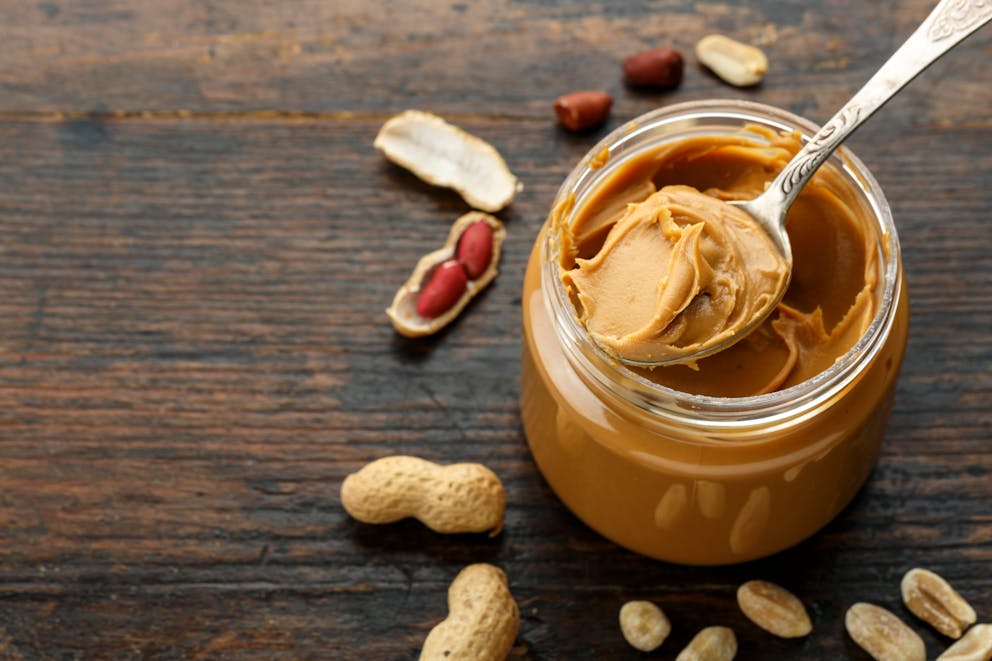What Food Has the Most Pesticides?
Pesticides are a concern for many health-conscious individuals because these chemicals, used to control pests and diseases in crops, often remain as residues on our fruits and vegetables.
Learn about the risks posed to your health by different pesticides, what foods commonly have the most pesticides, and what you can do to avoid consuming these harmful chemicals.
The Dirty Dozen: Foods with High Pesticide Exposure
Food is a necessity of life, but not all foods are equally beneficial. Some popular fruits and vegetables such as strawberries, spinach, kale, nectarines, apples, grapes, peaches, cherries, pears, and raisins have earned the unfortunate distinction of being part of the 'dirty dozen.'
These items carry high pesticide levels due to extensive use in their cultivation.
The Dangers of Pesticides in Food Production
Pesticides found on crops are essential in preventing significant crop losses from pests. However, these synthetic pesticides can also leave residues that persist even after washing or cooking, leading to chronic exposure, which poses health risks for consumers, including potential birth defects, according to regulatory bodies like the Environmental Protection Agency (EPA).
Beyond this, acute poisoning may occur if one ingests food heavily contaminated with specific pesticides, posing immediate health threats.
Genetically Modified Crops and Pesticide Levels
Agricultural advancements today mean we often consume genetically modified (GM) produce explicitly designed for compatibility with particular chemical treatments.
While GM crops help boost yields, they, unfortunately, lead us to higher pesticide exposures since these plants tend towards heavy spraying routines during growth phases, resulting in elevated residue levels at consumption time.
This is concerning because although genetic modification itself isn't inherently dangerous, regular intake over time could potentially contribute to adverse health outcomes given the cumulative toxicological effects associated when it comes down to consuming high-pesticide foods. Let's delve into low-pesticide alternatives you might consider incorporating into your diet to limit your exposure.
Low-Pesticide Foods for a Healthier Diet
Fruits and vegetables are essential components of a healthy diet, but not all produce is equal regarding pesticide exposure.
Some foods like avocados, cabbage, onions, frozen peas, asparagus, eggplant, cauliflower, and broccoli have been found to carry lower levels of pesticides.

The Benefits of Organic Foods
Organic food production has a unique advantage over conventional farming methods in that it limits the use of synthetic pesticides. This results in less pesticide residue on your plate when you opt for organic choices.
This reduction matters because research suggests consuming organic foods can increase nutrient intake while reducing harmful chemical exposure.
One study indicated that tomatoes grown organically had significantly greater levels of antioxidants than those cultivated conventionally.
Beyond being healthier due to its reduced chemical load directly impacting consumers' health positively, organic farming practices also contribute towards environmental sustainability by promoting biodiversity and limiting pollution from agricultural runoff.
Making Informed Choices - Organic vs. Non-Organic Foods
The choice between purchasing organic or non-organic isn't always clear-cut; there are cost considerations and availability, among other factors. However, knowing which items carry high pesticide residues could help us prioritize these while shopping organically.
EPA & EU Maximum Residue Limits (MRL)
Pesticide usage is regulated domestically (by agencies such as the Environmental Protection Agency) and internationally (like the European Union).
They set what is known as 'Maximum Residue Limits' defining acceptable concentrations of substances in fresh produce sold commercially.
A helpful resource would be the EPA's Pesticide Tolerance Database, which provides information regarding permissible amounts across various categories, helping make informed decisions based on scientific data rather than mere speculation or fearmongering.
For the 'dirty dozen items, organic is likely to be a better choice due to their higher likelihood of containing more pesticides.
Understanding Pesticide Residues on Fresh Produce
Fresh produce, including green beans and bell peppers, can often carry residues of pesticides. These are the remnants of protective measures taken during their growth phase to prevent significant crop losses.
Pesticides On Your Plate
In traditional farming, synthetic pesticides are typically used to safeguard crops from pests and diseases.
Once these chemicals have served their purpose in preserving the plants' health, they don't just disappear; instead, some linger on fruit or vegetable surfaces post-harvest - this is what we call 'pesticide residue.'
Detectable Levels: A Comparison between Domestic & Imported Goods
Preliminary data derived from test produce indicates detectable levels of pesticide residues in both domestic and imported goods.
However, a significant disparity exists based on variables such as the type of plant species involved and country of origin, among other factors that influence growing conditions.
It is suggested that imported fruits typically exhibit higher pesticide residue levels than those grown domestically, mainly due to different countries adhering to varying standards regarding usage limits.
Rinsing Away Risks: Reducing Surface-Level Contaminants through Proper Washing Techniques
A simple rinse under running water before consumption reduces surface-level contaminants; however, complete elimination isn't possible since certain types of pesticides are absorbed into the plant tissue, rendering them impervious to washing efforts.
Firm produce like melons and cucumbers should be scrubbed clean with a brush, whereas softer items can be rinsed thoroughly under tap water. However, despite rigorous cleaning practices, leafy greens might retain traces.
As you transition towards healthier dietary choices armed with newfound knowledge about potential hazards lurking within our everyday food staples, the decision-making process will inevitably require weighing the benefits of organic versus non-organic options.
Making Informed Choices: Organic vs Non-Organic Foods
Comprehending the contrast between organic and non-organic foods is essential when minimizing contact with pesticides.
Regulatory bodies, such as the EPA in the US and similar organizations within the EU, have set maximum residue limits for pesticides on organic and non-organic produce.
The primary distinction lies in how these products are cultivated. Organic farming techniques restrict the utilization of manufactured manures and pesticides, while customary or non-natural strategies regularly depend on them.
Hence, opting for organic alternatives can be an effective way to curtail your intake of harmful pesticides.
Navigating Maximum Residue Limits
'Maximum residue limits' (MRLs), established by the EPA, represent legal thresholds dictating permissible amounts of pesticide residues that may remain post-treatment with specific chemicals on food items.
Similar regulations exist within the EU, too, which determine MRLs across all food commodities.
These limits differ from one product to another based on factors like toxicity levels associated with a particular chemical used and the frequency of application during the cultivation process.
A Shopper's Guide: Making Informed Decisions
To assist consumers further in making educated choices about their diet and health, numerous shopper guides offer insights into various aspects ranging from nutritional value to the presence or absence of potentially harmful substances, including but not limited to pesticides.
Prioritizing Your Produce Purchases
If transitioning fully to organics isn't feasible due to budget constraints, perhaps consider prioritizing certain items where higher contamination levels have been consistently detected across studies conducted worldwide.
This will maximize the benefits of this investment for your health while helping you stay within the budget.

Can Peanut Butter Fight the Effects of Pesticides?
Whether peanut butter can counteract the effects of pesticides has sparked interest in the health community. Some individuals wonder if the consumption of peanut butter, due to its nutrient content, could potentially mitigate the negative impact of pesticide exposure.
However, it's important to note that while certain nutrients found in peanut butter, such as antioxidants, may support overall health, there is limited scientific evidence to suggest that peanut butter can directly counteract the effects of pesticides.
The best approach to minimizing pesticide exposure remains to choose organic and pesticide-free foods whenever possible.
As for the connection between peanut butter and cortisol levels, research on this topic is still emerging, and it's advisable to rely on a proper diet and a comprehensive approach to stress management for overall well-being.
Conclusion
The presence of pesticides in our food is a concerning issue for health-conscious individuals.
The 'dirty dozen' list highlights fruits and vegetables with high pesticide exposure, while organic options offer a lower-risk alternative.
Understanding maximum residue limits set by regulatory bodies helps inform our choices when purchasing produce.
While washing produce can reduce surface-level contaminants, certain pesticides may still persist. Prioritizing organic and pesticide-free foods whenever possible is crucial for minimizing pesticide exposure and promoting overall health.
Supporting Data
https://www.ewg.org/foodnews/dirty-dozen.php
https://www.ewg.org/foodnews/clean-fifteen.php
https://www.ewg.org/foodnews/summary.php
https://www.epa.gov/sites/default/files/2017-01/documents/pesticides-industry-sales-usage-2016_0.pdf
https://depts.washington.edu/ceeh/downloads/FF_Pesticides.pdf
https://www.who.int/news-room/fact-sheets/detail/pesticide-residues-in-food
Previous blog
Adrenal Fatigue Could be a Liver ProblemNext blog
How to RelaxTags

Popular
08/21/2024
55K views
02/23/2025
46.3K views
11/18/2024
277.5K views
03/18/2024
11/21/2022




